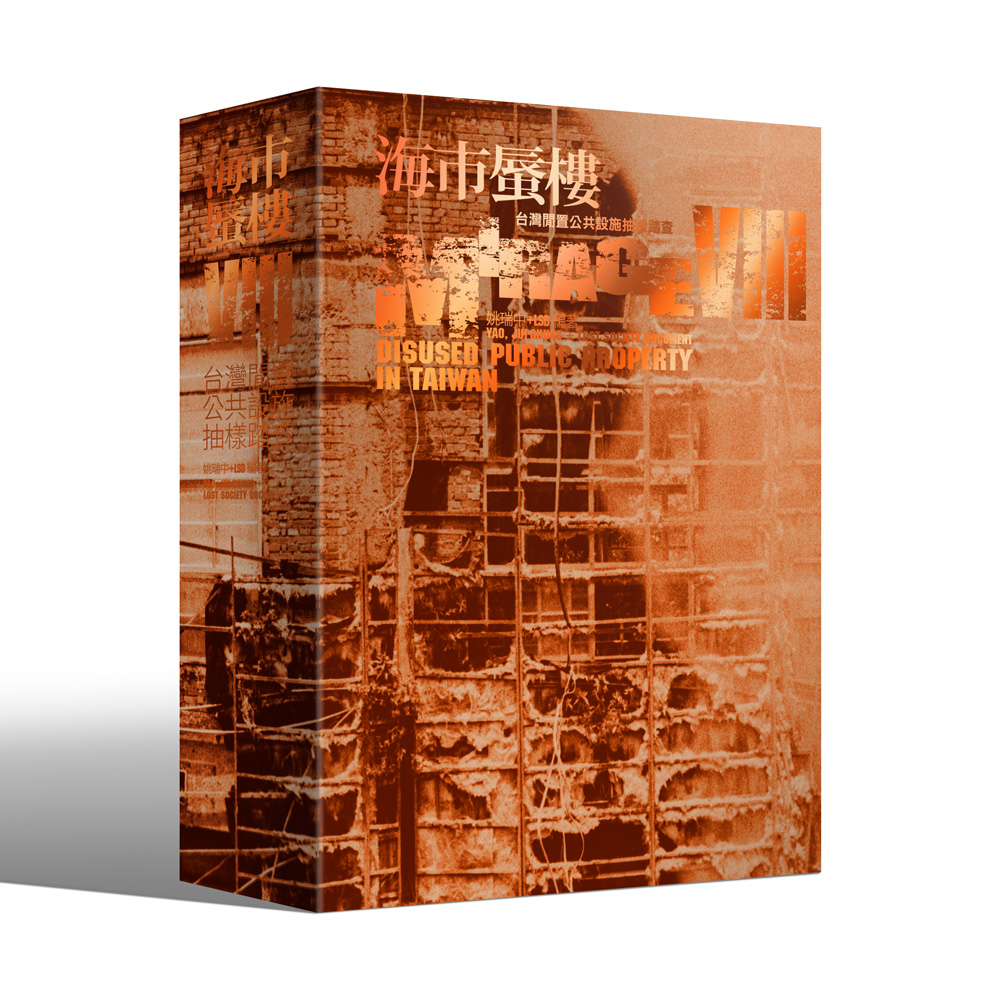
Yao Jui Chung
Publisher: Garden City Publishing Co, Taipei
Published Date: 2008-05-01
ISBN: 9789867009401

Ruins, Cynicism-- by Manray Hsu
Yao Jui-Chung is one of the most prolific artistic practitioners of his generation in Taiwan. As an artist, his works include installation, photography, performance, video, works on paper and sculpture. Such diverse artistic expression shows his limitless energy and determination that few of his peers can compare. Additionally, Yao is a curator, art critic, art salon manager, art teacher as well as an art historian who is actively archiving Taiwanese contemporary art. Behind all these roles is an intellectual whose work explores the major issues of his time and generation, especially the cold war ideology during Taiwans martial law period (1930s-1987), the development into advanced capitalism, and obstacles in its way toward democracy. Two decades into the lift of martial law, Yaos persistent exploration of the inextricable entanglement of post-martial law politics and capitalism distinguishes him from the mid-career generation whose work came out of the struggle against martial law, as well as from his peer generation.
Yao deals with these issues by looking at ruins resulting from the rise and fall of power over time, and has developed it into an “aesthetics of ruins.” Destroyed, abandoned and weathered either by artificial force or natural causes, ruins often evoke lament from poets or artists. Ruins are the "constructs" of changes in time, they stimulate our reflection upon cultures and civilizations. Nonetheless through the capitalist transformations of the world system, "all that is solid melts into air" (The Communist Manifesto). The swift flowing of capital bring factories and facilities to ruin; advanced war technology and the turnover of regimes drive military fortifications and political symbols to ruin; migrations of populations driven by multiple causes leads cities and houses to fall into ruin, and the "upgrade" of commercial products and the "update" of fashion heaves common things into piles of ruined waste. In addition to these physical ruins, Yao also focuses on semiotic ruins, especially the ideological and propagandistic trash such as "Recovering Mainland China" or "Liberating Taiwan" that were tossed about during the most hostile periods between China and Taiwan. After the annihilation of martial law, they lurk in our subconscious like ghosts; they are semiotic ruins. Arent all the overheated debates, confusion and clashes over "transitional justice" just more recent ruins in a way? Absurdity and cynicism are the core of Yaos "aesthetics of ruins". With a camera, Yao records abandoned sites on the marginalized areas throughout the island (or marginalized areas of our consciousness), and "with personal eccentric actions I attempt to reveal the absurd situations beyond our will and control in the history." (Statement of Yao Jui-Chung). In other words, even though Yao does not engage with these substantial and semiotic ruins by archaeological research, he does not distances himself from the concern of reality or truth. To Yao, reality is the "absurd situations beyond our will and control in the history", he discloses the meaninglessness in the meaning systems of physical or semiotic constructions with odd behaviors like the "dog philosophers" in the ancient West or some Chinese Daoists. To this point, questions like "What do ruins build for humanity?" are no longer self-contradictory. For ruins open up a contemplative space in which to understand history, ponder on meanings and reevaluate values, and at the same time, preserve a space of action in which the cynics can speak the truth to the hypocritical, self-deceptive, decadent systems of meaning and power.



















